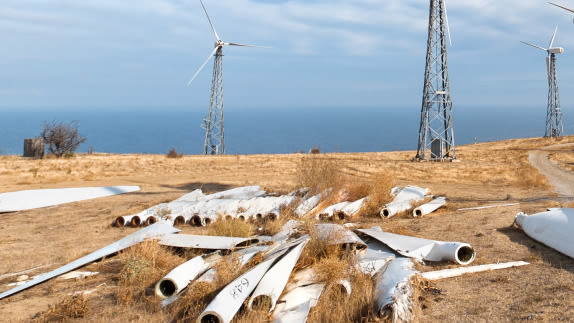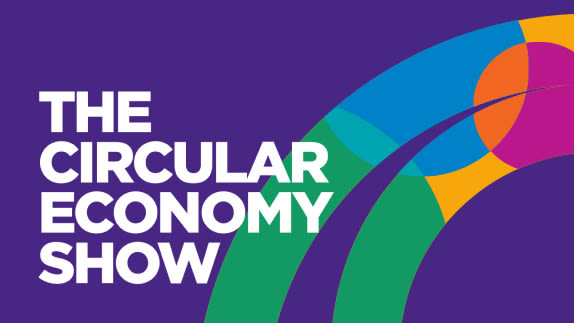On 7 September, the Ellen MacArthur Foundation, with support from its strategic partner CATL, hosted the forum “Driving circularity for the EV battery economy” during the IAA Mobility Show in Munich.
The event brought together leading voices from across the global automotive value chain, including CATL, BMW, Mercedes-Benz, and BASF, alongside representatives from the Global Battery Alliance, the European Battery Alliance, Benchmark Minerals Intelligence (Rho Motion), and Xynteo. More than 100 participants attended to explore how the circular economycircular economyA systems solution framework that tackles global challenges like climate change, biodiversity loss, waste, and pollution. It is based on three principles, driven by design: eliminate waste and pollution, circulate products and materials (at their highest value), and regenerate nature. can be scaled across the battery ecosystem.
Discussions focused on two central themes: pathways to circularity across the battery value chain; and how policy and finance can work together to accelerate progress.
Built for circularity: Design, manufacture, and infrastructure for batteries with circular potential
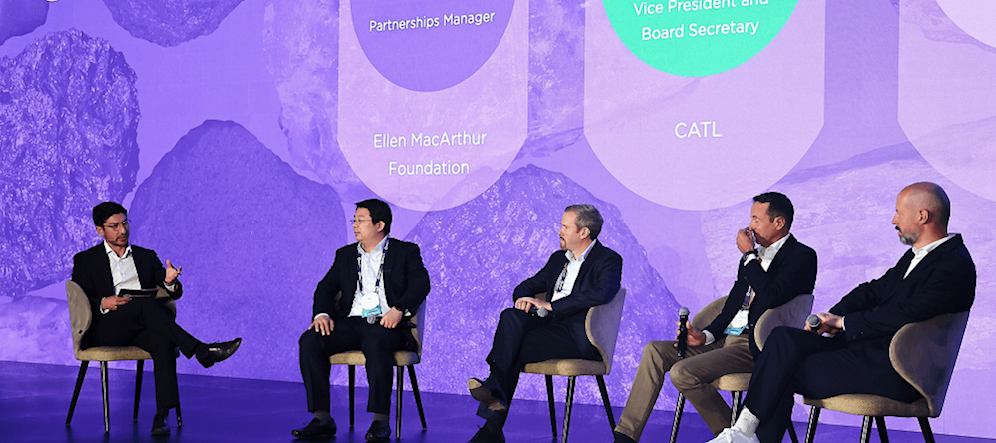
The first panel discussion explored how circular economy principles can be integrated across the entire battery value chain, encompassing design and sourcing, manufacturing, use, and end-of-life management. The panel featured:
David Jiang, Vice President and Board Secretary, CATL
Daniel Schönfelder, President, BASF Battery Materials
Oliver Ganser, Vice President of Digitalisation and Head of BMW Catena-X, BMW
Jens Rubi, Senior Manager and Head of Circularity, Mercedes-Benz
Participants emphasised that the whole value chain needs to be engaged in enabling a fully circular electric vehicle (EV) battery industry. This means reshaping the entire system, including responsible material sourcing, improvements in battery chemistry, and addressing existing gaps in infrastructure for material recovery and recycling throughout the value chain. The design stage will also play a crucial role, with circular strategies requiring thinking ahead to ensure materials can be recovered and reintegrated at the end of their first life.
Another recurring theme was the importance of collaboration across the value chain. No single actor can deliver circularity alone. Original equipment manufacturers (OEMs), chemical companies, battery manufacturers, and recyclers all need to work in partnership, supported by enabling policies and financing.
Data was described as the backbone of collaboration. Digital tools such as product passports are needed to provide traceability and ensure that the right information reaches the right actors along the chain. However, challenges remain in collecting and verifying data across multiple tiers, especially among smaller companies with limited digital readiness. Technologies such as AI and blockchain are potential enablers for improving transparency and reducing the burden of data collection.
The panel concluded with a call to treat circularity not as a compliance burden, but as an investment in the resilience and sustainability of the industry. Collaboration, shared standards, and collective commitment across stakeholders will be key to turning risks into opportunities and building the foundations of a truly circular battery ecosystem.


From money to mandates: Scaling circular batteries with smart policy and finance
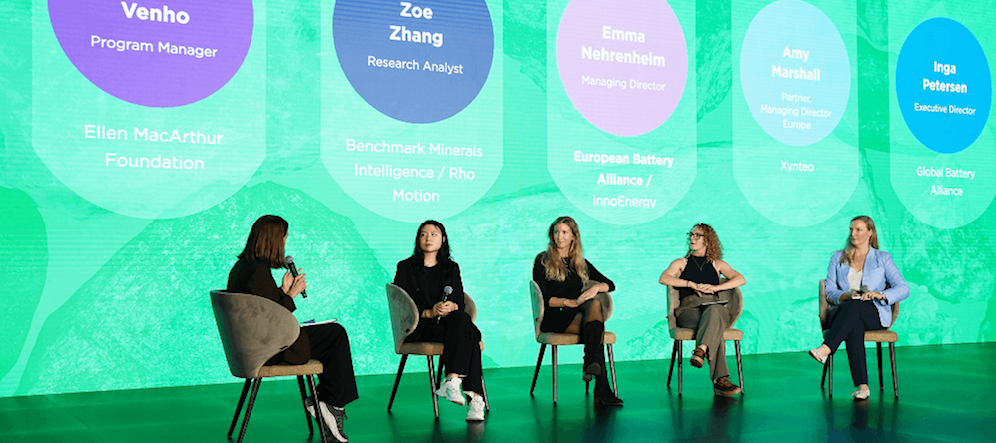
The second panel addressed the enabling conditions needed to accelerate circularity across the global battery ecosystem, highlighting the role of policy frameworks, financing mechanisms, and standardisation. The discussion featured:
Emma Nehrenheim, Managing Director, European Battery Alliance
Zoe Zhang, Critical Minerals Research Analyst, Benchmark Mineral Intelligence
Amy Marshall, Managing Director, Xynteo
Inga Petersen, Executive Director, Global Battery Alliance
Panellists noted that today’s policy landscape is fragmented and complex, making it difficult to mobilise the scale of investment required and to enable the smooth movement of materials across emerging circular battery value chains. This means that significant investment will be required to develop the necessary infrastructure and capabilities in all regions to enable a more effective circulation of battery minerals. This, they noted, will require collaborative action from both private and public actors.
Policy was identified as a critical driver. The EU’s new battery regulation was noted as a turning point, creating mandatory pull factors such as minimum thresholds for recycled content included in products. This measure is viewed as essential for avoiding a linear battery supply chain by creating the demand necessary to support greater investment in battery recycling infrastructure. Yet translating regulation into practice remains difficult due to the slow scale-up of recycling in Europe.
The discussion also echoed the point on digital solutions raised in the previous panel, such as product passports, to enhance transparency. By providing clarity on how the system operates and on its impacts, such tools can give both policymakers and investors the confidence needed to back the transition to circular EV battery value chains.
New initiatives from the Ellen MacArthur Foundation
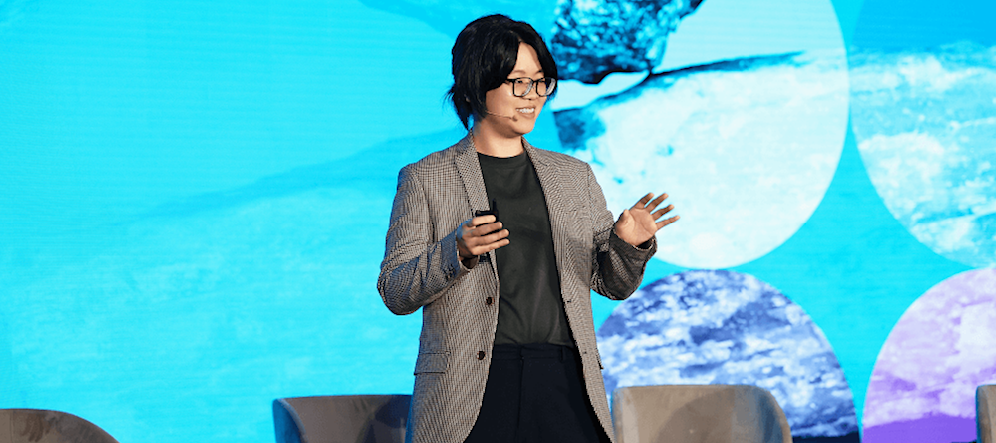
At the forum, the Foundation announced two major initiatives:
A forthcoming white paper on the circular economy for EV batteries, exploring the technological, policy, and business model challenges, and setting out pathways for a global transition
Convening stakeholders, committed to advancing a circular economy across the value chains of critical minerals, to collaborate with the Foundation on building sustainable and resilient supply chains
In closing, Wen-Yu Weng, Executive Lead for Critical Minerals at the Foundation, underlined that while the transition to circular supply chains for critical minerals may be unstoppable, many challenges may arise. It is up to us to work together to ensure that this is conducted in a more ethical, sustainable, and empowering manner for the energy transition.
To get in touch with the Foundation’s critical minerals team to learn more about our work or explore ways to get involved, please contact our team.




